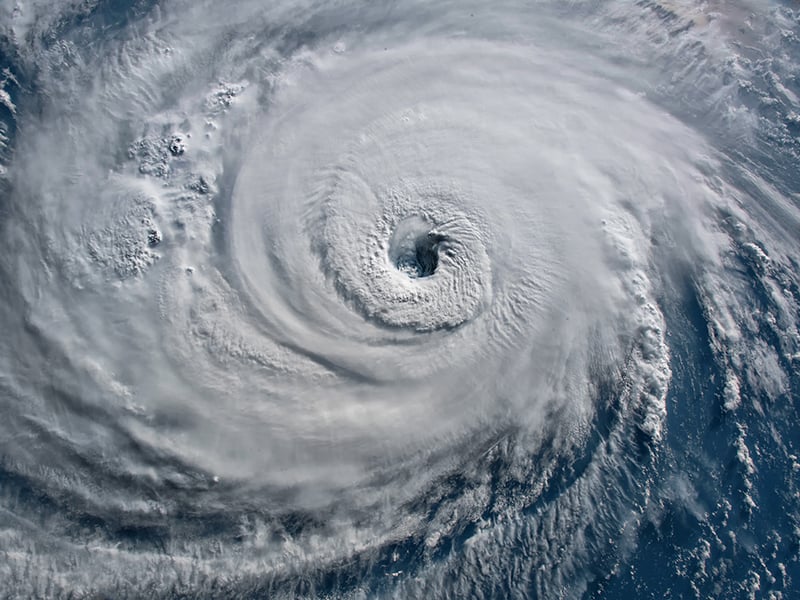
The National Oceanic and Atmospheric Administration (NOAA) has released its predictions for the 2023 Atlantic hurricane season, and it's time to get prepared.
NOAA is forecasting an average Atlantic hurricane season for 2023, with a likely range of 12 to 17 named storms (winds of 39 mph or higher). Five to nine of those could become hurricanes (winds of 74 mph or higher), including one to four major hurricanes (category 3, 4 or 5; with winds of 111 mph or higher), according to their analysis.
At C Spire, we don’t take hurricanes or other severe-weather threats lightly. Here’s how we keep our wireless network running when the inevitable happens, plus some resources consumers can keep handy to help with their own preparation and recovery plans.
We don’t get prepared—we stay prepared
C Spire team members work year-round to harden our extensive wireless networks and prepare for a wide range of potential disasters and major weather events. We routinely review and update our emergency preparedness and crisis communications plans, as well as conduct drills throughout the year to test the readiness of our network and team members.
‘Super switches’ at the ready
Multiple facilities placed around C Spire’s wireless footprint, nicknamed “super switches,” are designed to withstand the force of a category-five hurricane. These high-tech facilities process millions and millions of calls and data and add additional protection and service assurance for customers. Within the super switches, we have additional generators and a grid of battery backups, and then redundancy systems on top of that just to ensure the maximum reliability of our network. We don’t quit, and that’s good news for you.
Backups for the backups
Network engineers run regular drills to force-fail our systems in order to make sure generators kick on. Tower crews stand ready to act, with fuel trucks prepared to service our cell sites in the event external fuel sources get low. COWs (Cell on Wheels) and COLTs (Cell on Light Truck) are readied to respond in the event a cell site goes down or is damaged.
But how can you get or stay prepared?
Stay weather aware with free alerts on your mobile phone
Consumers can receive free, location-based Wireless Emergency Alerts (WEA) notifications on capable mobile phones under a national public safety warning system designed to alert consumers during emergencies. WEA messages feature a special tone and vibration that is repeated twice so users can easily identify these types of emergency alerts. See instructions for iOS and Android here.
More readiness tips
- Carry a spare cellphone charger and external charging device. Keep devices and chargers in a waterproof bag. Charge your batteries when a disaster or storm is approaching.
- Download emergency apps including FEMA and MDOT (iOS, Android), and bookmark the National Weather Service’s mobile-friendly site to help keep you updated as the situation unfolds.
- If you don’t have a flashlight app built into your mobile phone, download one.
- Save phone numbers and email addresses for police, fire, hospital, school, vet and other emergency resources in your phone. If you are a parent, find out how your children’s school or school district will notify you during a weather or other emergency.
- Know how to forward your home phone number to your mobile device.
- Take photos and/or videos of your property periodically to have available for insurance purposes. Back up your files to a secure storage space to ensure images and videos are saved separately from your device.
What to do during an emergency or disaster
- Use voice calls only for important communication and keep them short. Instead, use text messaging, email or social media to let your loved ones know your status. Keep messages short and simple.
- Conserve your cellphone’s battery life:
- Whenever possible, turn on your phone’s power-saving mode.
- Reduce your screen’s brightness, and adjust your settings to ensure your phone’s screen goes into sleep mode faster.
- Close unused apps and turn off push notifications so nothing is running in the background.
- Turn off Bluetooth, WiFi, and location-based services when you don’t need them.
- Set your email to arrive manually rather than having it automatically sent to your device.
- Check your local wireless store to see if they are open and providing charging station services during emergencies.
- For 9-1-1 emergencies, call if you can or text if you can’t. Stay on the line until the operator tells you it’s safe to end the call. When possible, have detailed location information ready.
Additional resources
We encourage you to stay weather aware during hurricane season, all the way through November 30. Here are some helpful resources to bookmark.
Mississippi Emergency Management Agency
Alabama Emergency Management Agency
Tennessee Emergency Management Agency
Federal Emergency Management Agency

















